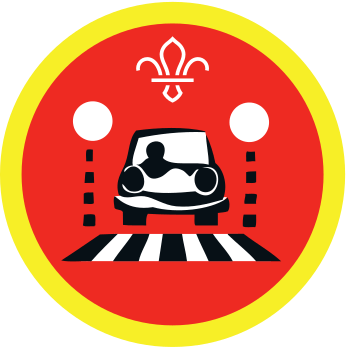Perfect passengers
You’ll need
- Stopwatch or phone
- Chairs
- A4 paper
- Pens or pencils
- Masking tape
- Remote controlled toy cars
- Items to create an obstacle course
Position your passengers
- Everyone should think of a time they were a passenger in a car or a coach. What things did they have to do to be a good passenger? What could happen if they weren’t a good passenger?
- Everyone should split into teams of between four and six people. Give each team a remote controlled car, a timer, some paper, and a pen or pencil.
- Each team should mark out a short course for their remote controlled car.
- Each team should set up five chairs (two at the front, three at the back) just like in a car.
- One member of the team should sit in the driver’s seat with the remote control. One person should stand by the start of the course with a timer and the toy car. Everyone else should sit in the passengers’ seats.
Test your times
- When the time begins, the driver should drive the toy car around the track from start to finish. The passengers should do all of the things that good passengers do.
- The timer should write down how long it took to complete the course, and move the car back to the start of the track.
- The same driver should drive the car around the track from start to finish again. This time, the passengers should do all of the things that unhelpful passengers do – they might argue, move around in the car, ask the driver questions, or do anything else that makes it harder for the driver to see or concentrate.
- The timer should write down how long it took to complete the course.
- If there is time, people might want to swap roles.
Distracted drivers
- Everyone should come back together for a group discussion. The timers should announce how long the drivers took each time. Was there a difference?
- The drivers should tell everyone how they felt their driving was in each round. Did they crash or come off the course? Did they find it more difficult with bad passengers?
- Everyone should talk about what the game showed. Did the bad passengers make driving more dangerous? What if this had been a real car? Drivers need to be able to focus and not be distracted by their passengers, as this can lead to accidents. Why could bad passengers lead to accidents?
Reflection
This activity was about being responsible for your actions. Why must you take responsibility for being a good passenger? Who might learn from your good behaviour and copy you if you are a responsible passenger?
This activity was also about gaining independence and thinking about being a good passenger without being asked. Who would appreciate you being a good passenger next time you were in the car with them? In what other circumstances might behaving sensibly be important?
Safety
All activities must be safely managed. You must complete a thorough risk assessment and take appropriate steps to reduce risk. Use the safety checklist to help you plan and risk assess your activity. Always get approval for the activity, and have suitable supervision and an InTouch process.
It’s up to you how much practice with the remote controlled cars the drivers get before their go.
Make the courses as long or short, complex or simple as suits the group.
If you can’t get hold of a remote controlled toy car, play the game with teams walking along the course instead. Instead of a 'timer', have a 'Sat-Nav'. The Sat-Nav has to give directions to the driver, to reach a certain destination that only the Sat-Nav knows the location of. How does it impact the driver when they’re trying to follow directions with bad passengers distracting them?
This activity might be difficult or upsetting for anyone who has been involved in or has witnessed (or who knows someone who was involved in or a witness to) a road accident. Let people know about this activity in advance, including parents and carers. You may need to talk to people before, or adapt the activity so they can take part.
All Scout activities should be inclusive and accessible.
